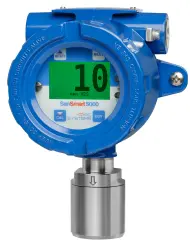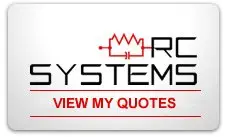Photoionization Detector System
A Photoionization Detector (PID) is a gas detector used to measures volatile organic compounds (VOCs), such as benzene, and other gases. Primarily used to monitor potential VOCs exposure for workers in industrial, military, and manufacturing facilities, they are useful for industries with the potential for spills or leaks of hazardous materials, oil, or gasoline.
RC Systems engineers its PID to detect a variety of organic compounds. These gas detectors provide effective, reliable performance in a broad range of applications.
How PID Gas Detectors Work
An RC Systems PID detector features an ultraviolet lamp that emits photons. The compound inside an ionization chamber then absorbs the photons. Photoionization occurs when an atom/molecule absorbs light from energy, which insufficient levels causes an electron to leave, creating a positive ion. Ions produced during this process are collected on electrodes, and the current generated provides a measure of the analyzed substance.
The PID detector can measure the electrical current, and converts this to the concentration of VOCs present. It detects only certain VOCs and will not pick up gases in the air like carbon dioxide. Because only a small fraction of the analyte molecules are actually ionized, this detection method is nondestructive. It can be used in conjunction with another detector to confirm analytical results.
Request a quote on the PID detector you need, or contact RC Systems to order or to learn more.
Advantages of Photoionization Detectors
Gas detectors like PID monitors provide many advantages; the most important advantage is the safety of workers. A PID detector is ideal for oil and gasoline spills, leaking cylinders or gas valves, hazardous materials incidents, and other emergency leak situations.
VOCs are toxic and often combustible materials that can endanger workers, even in low concentrations. For additional safety, a photoionization detector should be installed in every industrial facility that could be exposed to VOCs.
PID gas monitors are:
- Cost-effective gas detectors
- Simple to use and easy to install
- Able to provide almost instantaneous results
- Able to detect low concentrations of VOCs
Types of PID Gas Monitors
SenSmart 6500 PID Gas Detector
This state-of-the-art gas detector is a versatile unit with a reliable ‘ST-44’ transmitter, vivid color display, Ethernet connection for Modbus TCP and embedded webpage. It is a high performance, universal gas detector that provides many features for photoionization sensors.SenSmart 5500 PID Gas Detector
The SenSmart 5500 gas detector offers more features and better performance-to-cost ratio than other competitive products. With its bright, color backlit display and programmable relays, it will satisfy the most demanding application’s requirements.SenSmart 3500 PID Gas Detector:
The SenSmart 3500 3-wire gas detector is an easy-to-use detector that is designed with cutting-edge technology. Its ‘ST-48’ smart transmitter provides reliable, innovative toxic and combustible gas detection.Contact RC Systems for Photoionization Detectors
We manufacture gas detectors for a range of industries, providing additional safety to all workers who have the potential to be exposed to hazardous materials. Our products are high quality, effective, and cost-efficient, and our team of experts are available 24/7 if you have any questions or concerns.Request a quote on the PID monitor you need, or contact RC Systems to order or to learn more.




